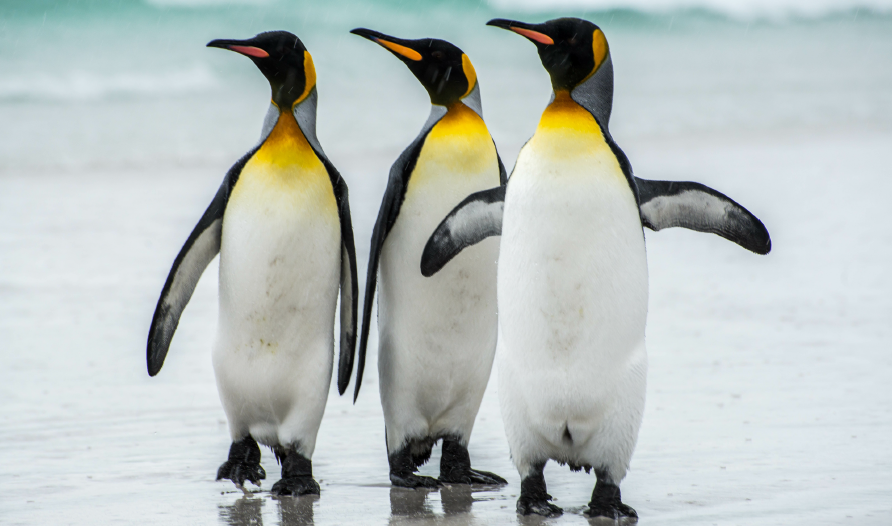
Deep in the heart of Chilean Tierra del Fuego, where the winds sweep across Bahía Inútil (ironically named “Useless Bay”), we’ve been spending our days observing one of nature’s most charismatic creatures. Through careful observation of a small but vibrant colony of King Penguins, we’re beginning to understand that these birds may be far more socially sophisticated than previously recognized.
A Unique Colony Structure
Our observations focus on a fascinating colony of 110 king penguins, but what makes this group particularly interesting is their distinct social organization. Rather than clustering in one large group, these penguins have organized themselves into several smaller communities. About 30 birds gather in one group, while 50 meters away, another group of 50 penguins congregates. A third group of the remaining members settles 20 to 30 meters further still. This spatial arrangement suggests a complex social structure we’re only beginning to understand.
The Mystery of the Long Walk
One of the most puzzling behaviors we’ve witnessed involves their journey from ocean to colony. Instead of taking the most direct route—a relatively short 200-meter walk—many penguins choose to come ashore up to a kilometer away from their nesting site, typically to the north of their colony. This seemingly inefficient behavior has led us to consider whether it might be a crucial survival strategy.
Predator Awareness and Safety
The extended walking distances might be explained by the presence of their primary predators: sea lions and leopard seals. While we haven’t frequently observed these predators during our time here (and notably, killer whales are absent from these waters), the penguins’ behavior suggests a deep-rooted awareness of these threats. Their cautious approach to water entry particularly demonstrates this vigilance.

The Social Dance of Ocean Entry
When heading out to sea, we observe groups of four to nine penguins engaging in what appears to be a collective decision-making process. They stand precisely 2-3 meters from the surf, studying the water with remarkable intensity. What follows is a fascinating display of group dynamics: they face the water, then turn inland, then back again, taking just inches of steps forward at a time. Eventually, one brave individual ventures in first, testing the waters before the others follow—though sometimes, the entire group returns to shore, apparently having second thoughts about their maritime expedition.
The Joyful Homecoming
Perhaps the most heartwarming behavior we’ve observed involves the return of penguins from their oceanic foraging trips. As a returning penguin approaches the colony, it raises its head and releases a distinctive bugling call. What happens next is extraordinary: one penguin (presumably the mate) answers, but then dozens of others join in a chorus of welcome calls. This celebration seems particularly meaningful when you consider that these birds aren’t just returning home—they’re bringing back a stomach full of fish to regurgitate to their brown, fluffy youngsters waiting in the colony.
The Future of Our Observations
While our current observations are helping us piece together the complex social fabric of these remarkable birds, we recognize there’s still much to learn. We’re working on methods to identify individual penguins, which will help us better understand their relationships and social networks within the colony.
Join Us in Discovery
We’re excited to share that we’re opening our observation sessions to wildlife enthusiasts through carefully designed eco-tours. By joining these expeditions, visitors can contribute to our growing understanding of king penguin society while supporting crucial conservation efforts. Unlike traditional wildlife viewing, our tours offer the unique opportunity to participate in genuine observational research, documenting these fascinating behaviors firsthand.
Learn more about the tour here!
___________________
About the Observer: Dr. Charles Munn, Ph.D., is a conservation biologist and CEO of SouthWild, dedicated to studying and protecting South America’s remarkable wildlife through careful observation and sustainable eco-tourism initiatives.

